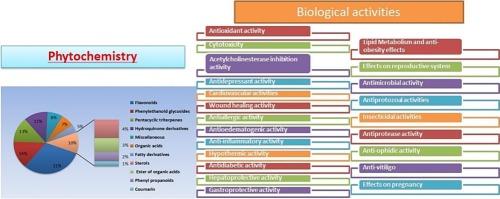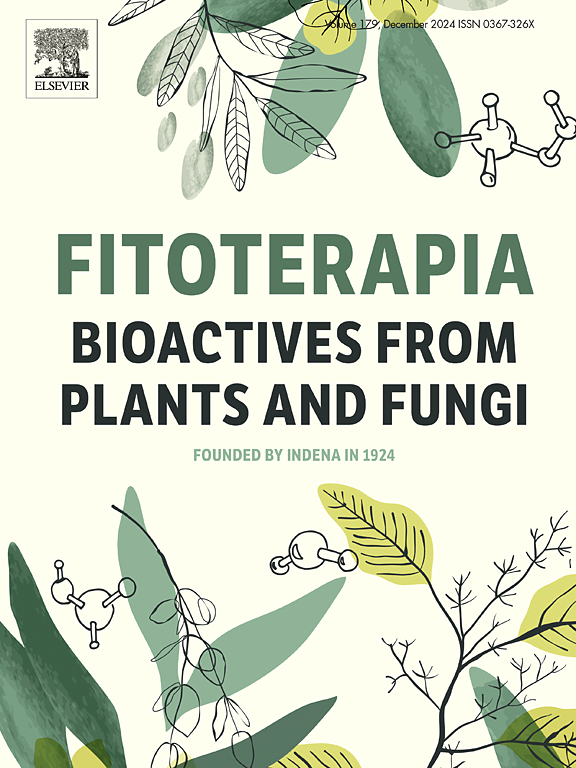An overview of the phytochemical and biological activities of the genus “Jacaranda”, family Bignoniaceae (1976–2024)
IF 2.6
3区 医学
Q3 CHEMISTRY, MEDICINAL
引用次数: 0
Abstract
Jacaranda is a genus belonging to family Bignoniaceae and comprises about 49 species. Jacaranda plants are frequently employed in traditional medicine for skin ailments, venereal infections, leishmaniasis, colds, rheumatism and gastrointestinal disorders. Numerous studies have stated that Jacaranda species constitutes a rich source of various classes of secondary metabolites primarily dominated by flavonoids, followed by phenylethanoid glycosides, triterpenoids, hydroquinones, organic acids, sterols, and others. Additionally, different extracts from various Jacaranda species as well as many isolated phytoconstituents displayed a variety of biological effects, particularly antioxidant, cytotoxic, antimicrobial and anti-inflammatory activities in addition to the antiprotozoal and insecticidal potentials. The present review summarizes all the secondary metabolites purified from the genus Jacaranda besides the relevant biological activities of the different extracts, fractions and/or compounds. We are, herein, updating the earlier published reviews and highlighting the most recent published data, covering the period from 1976 to 2024, and over 109 publications have been reviewed. The study recommended that some species of the genus Jacaranda require more pharmacological and phytochemical attention in order to discover new natural drug leads.

大戟科蓝花楹属植物化学和生物学活性研究概况(1976-2024)
蓝花楹属是碧桂花科的一个属,约有49种。蓝花楹通常被用于治疗皮肤病、性病、利什曼病、感冒、风湿病和胃肠道疾病。大量研究表明,蓝花楹属植物是各种次生代谢物的丰富来源,主要以类黄酮为主,其次是苯乙醇苷、三萜、对苯二酚、有机酸、甾醇等。此外,各种蓝花楹的不同提取物以及许多分离的植物成分显示出多种生物效应,特别是抗氧化、细胞毒、抗菌和抗炎活性,以及抗原虫和杀虫潜力。本文综述了从蓝花楹属植物中分离得到的次生代谢产物,以及不同提取物、馏分和化合物的相关生物活性。在此,我们更新了早期发表的评论,并突出了最近发表的数据,涵盖了1976年至2024年的时间,已经审查了超过109份出版物。该研究建议,为了发现新的天然药物先导物,蓝花楹属的一些物种需要更多的药理学和植物化学关注。
本文章由计算机程序翻译,如有差异,请以英文原文为准。
求助全文
约1分钟内获得全文
求助全文
来源期刊

Fitoterapia
医学-药学
CiteScore
5.80
自引率
2.90%
发文量
198
审稿时长
1.5 months
期刊介绍:
Fitoterapia is a Journal dedicated to medicinal plants and to bioactive natural products of plant origin. It publishes original contributions in seven major areas:
1. Characterization of active ingredients of medicinal plants
2. Development of standardization method for bioactive plant extracts and natural products
3. Identification of bioactivity in plant extracts
4. Identification of targets and mechanism of activity of plant extracts
5. Production and genomic characterization of medicinal plants biomass
6. Chemistry and biochemistry of bioactive natural products of plant origin
7. Critical reviews of the historical, clinical and legal status of medicinal plants, and accounts on topical issues.
 求助内容:
求助内容: 应助结果提醒方式:
应助结果提醒方式:


